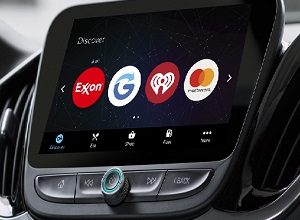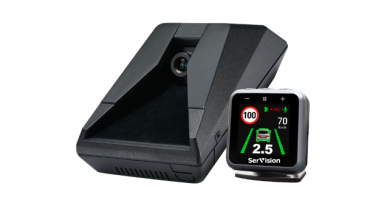Cisco explains the Internet of Cars: The next revolution in personal transportation
Published: January 17, 2015 | Detroit, MI
“According to Cisco, connecting vehicles on a unified communications network platform can help abate many of the personal and societal costs and create a yearly savings of more than $1,400 per each vehicle.”
Andreas Mai, Director-Connected Vehicles | CISCO

Every year, eight million traffic accidents cost 1.3 million lives and injure more than seven million people. Globally, we waste more than 90 billion hours in traffic jams, generating 220 million metric tons of carbon equivalent to wasting at least $1 trillion of the global gross domestic product (GDP). In the United States, congestion alone costs $750 to $950 per vehicle per year, totaling $150 billion to $210 billion. Much of the industry’s focus is on building more fuel-efficient vehicles (including electric vehicles), but even the most fuel-efficient car cannot escape the inefficiencies of urban traffic. Some of these are:-
- Eleven to 13 % of time is wasted in urban congestion.
- Seven to 12 % of urban traffic is created by people looking for parking.
- Ten to 17 % of urban fuel is wasted at traffic-light stops when there is no cross-traffic.
Cisco believes that an integrated automotive information network can offer a truly transformative way to alleviate transportation gridlock and enable new mobility concepts. Connected vehicles can intelligently plan out the best route using real-time traffic and weather conditions; help people drive more safely and avoid crashes; and even monitor a driver’s health and transmit vital data to first responders after a crash.
Connected vehicles have the potential to provide better customer care, lessen insurance costs, ease congestion through “smart road” pricing, and create a cornucopia of new business models and profit pools for various industry players.
According to Cisco, connecting vehicles on a unified communications network platform can help abate many of the personal and societal costs and create a yearly savings of more than $1,400 per each vehicle we connect:
- $550 for vehicle owners by reducing operating and insurance costs.
- $420 by reducing the societal cost of crashes, congestion and pollution.
- $300 for the automotive industry, by reducing costs of warranty, service, remote diagnostics and prognostics, over-the-air updates, more data about what their customers want, and closer CRM – all enabled by connectivity.
- $160 which in light of the many great start-ups around conservation that are surfacing and new business models such as location based services, electronic parking, ride sharing, etc.
“The Internet of Cars” is a catalyst for new business models along the entire mobility value chain: from building and servicing cars, cloud based infotainment and location based services, to crash prevention and intelligent traffic management.
One of the most important service would be an advanced driver assist system (ADAS), where previously independent sensors, control units and actuators on-board of vehicles are connected with each other and potentially external sensors on other vehicles (e.g., via DSRC) and the roadside to make operating vehicles safer.
Another example is remote diagnostics. Once all the subsystems are connected, we can extract data from this subsystem and merge it with other pools of data that could help identify potential warranty issues like call center data, social media data, quality data, dealership communication, etc… To be able to manage this avalanche of data, processes have to be connected across organizational silos (e.g., Warranty Management, Quality Management, Supply Chain, Dealer Operations, Parts & Accessories, Customer Communication) to effectively reduce the detection to resolution cycle.
The unified ‘one-to-many’ approach
Connected cars could do for the automotive industry what smartphones did for the phone industry. By integrating smartphone capabilities into vehicle ergonomics with an intuitive, voice controlled UI/UX, automakers will not only enhance the in-vehicle experience, but will also promote a hands-free approach that reduces the risks of driver distraction.
Future cars will augment our driving capabilities and make our travel experience safer and more convenient. While en route, cars will proactively propose to visit friends nearby, restaurants with special lunchtime deals, hotels at night time, and alternate options to use time more productively when congestion is unavoidable.
Ubiquitous vehicle connectivity not only allows automakers to ride the wave of smart mobile technology, but also enables a fundamental strategy shift from merely building cars to selling personal travel time well-spent. It is not enough merely to connect vehicles to the Internet. To provide the full benefits of vehicle connectivity, the automotive industry also needs to connect the extended value chain
One approach is to combine all of a vehicle’s specialized communication systems under a single unified communications platform. Cisco estimates that by using a multipurpose, on-board communication unit instead of separate devices for audio, telematics, satellite radio, navigation, insurance dongle, Wi-Fi, intelligent traffic system/dedicated short-range communications, tolling, and parking, stakeholders could save approximately 25 % of the one-time hardware and software costs. They could save an additional 40 % per year in operating costs by using a single service platform. This would reduce the total one-time costs from $400 to $300, and annual operating costs from $600 to $360.
Challenges and roadblocks
Today, the value system of personal mobility is under attack by a new generation of drivers that cherish social media and technology more than a car. This is scary news for an industry whose products have typically represented the second-largest expense (after home purchases) for an average household over the last century. It is no longer enough to sell personal transportation; people want a personalized driving experience that keeps them connected to everything that is important to them—friends, information, music, maps, schedules, and more.
Cyber security also poses a lot of challenges in the connected car segment. Modern vehicles use a wide range of communication interfaces to connect with the outside world. These communication interfaces, such as OBD-II, USB, Bluetooth tethered smartphones, embedded cellular modems or onboard Wi-Fi expose the vehicle to a growing range of security threats. The most damaging threats, however, emerge as vehicles begin to connect to the Internet and to support more advanced applications such as over-the-air firmware updates. Malware can infect a vehicle through its communication interfaces and cause severe consequences.
Attackers can remotely access and control vehicle’s onboard systems, steal private data from vehicles and users’ connected devices, monitor vehicle locations, and modify ECU software. Crime and terrorism organizations can exploit the vulnerabilities of connected vehicles to disrupt the transportation system. Therefore, an advanced security solution is urgently needed to adequately protect connected vehicles. The lack of such an adequate security solution not only exposes existing vehicles to growing security risks but also prevents many applications from being introduced into vehicles.
At Cisco, we have a number of highly valuable security products and services to holistically protect connected vehicles against cyber attacks from chip to cloud level. Our end-to-end security reference architecture is designed to set the industry standard for securing connected vehicles.
We believe that the automotive industry will converge toward a factory-installed on-board unit for providing vehicle connectivity. This unified communications platform will provide the connectivity for basic telematics, voice, and data services, including off-board navigation, traffic information, location-based Internet services, video, and gaming.
These trends and requirements are likely to make connecting vehicles a multi-carrier and multi-technology play, and will drive the emergence of carrier- and technology-agnostic platforms. Service providers will need to respond to the new customer demands by developing new business models to fund the on-board unit and connectivity costs, and to fend off commoditization and margin pressure.
About the author
Andreas Mai leads the Cisco Internet Business Solutions Group (IBSG) Automotive Practice in North America. He is a thought leader in the “Connected Vehicle” business case and architecture for automotive and insurance companies, service providers, and governments. Mai has advised automotive OEMs and suppliers, industrial equipment and aerospace suppliers, and private equity investors in North America and Europe. He has a Diplom-Kaufmannin European Business from the universities of Osnabrück, Germany; STE Universidad de Deusto, Spain; and Buckinghamshire, United Kingdom.



